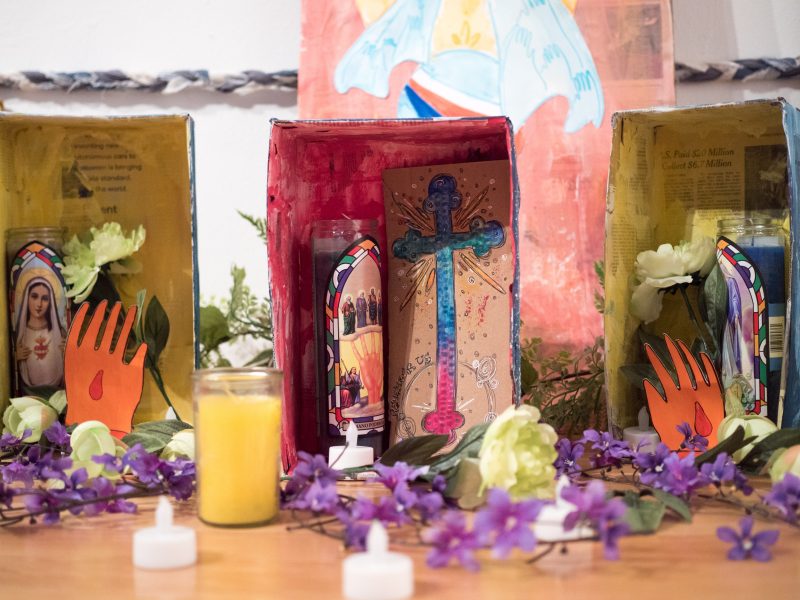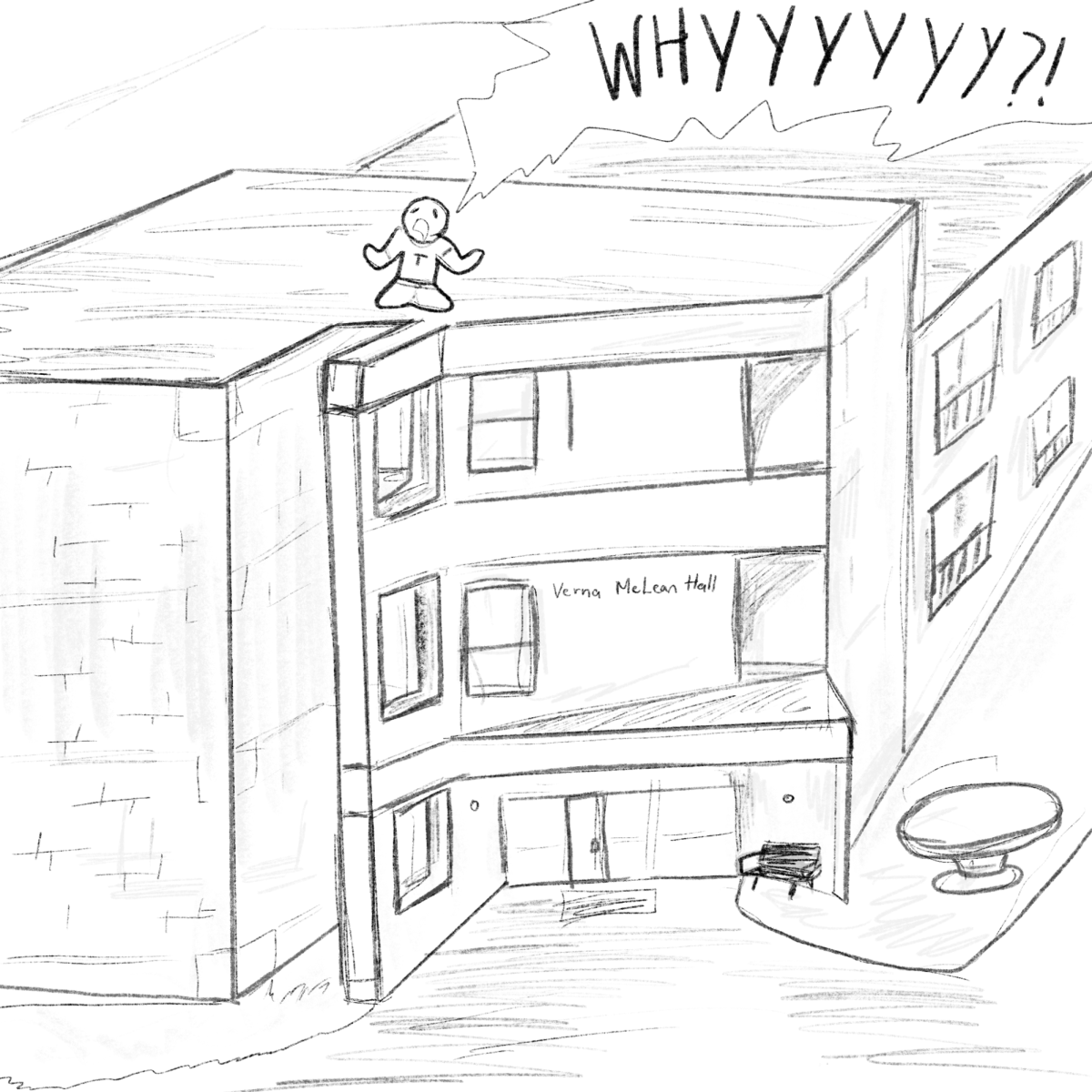When you visit the “Mini,” Trinity’s annual competitive art exhibition featuring the work of nine students, don’t be fooled by the prayer candles and altar, the messages of female empowerment on “prayer cards” and the names of queer women on the wall. The work by Ariel del Vecchio and Abigail Wharton is a stunning example of sacrilege and white feminism at its finest, as it masterfully erases Chicana/o artists and mocks practicing Catholics.
Images of the Virgin Mary sit in candles on the floor that can be purchased for a dollar at HEB next to messy renderings of ofrendas (Spanish: “offerings”), which eerily reminds me of a Día de Los Muertos altar I made as a child out of a shoebox.
A fence, reminiscent of la frontera (Spanish: “the Texas/Mexico border”), looms nearby. Then, of course, there is a sign labeled “The Gospel According to the Violets,” an homage to queer women whom we are supposed to credit for progress, more than half of which are over-glorified white women.
Perhaps the icing on the cake is that despite much of the imagery clearly referencing Mexican and Chicana/o art, there is not a single Mexican name to be seen. Any doubt of the Mexican influences of the piece can be resolved by a quick Google search of “Day of the Dead altar” or “Chicano art.”
While critiquing Catholicism, the artists expunge Mexican traditions in favor of celebrating those who have nothing to do with the culture, creating the same issues of suppression directed towards Mexican people.
I have been one half of a Catholic lesbian couple for over three years now. My partner and I have dealt with our community’s misguided ideas about our relationship since day one. Neither of us can be safely open to our Catholic families.
I have spent many sessions confessing my “homosexual sins” and been explicitly told by youth leaders that people like me are no better than murderers, adulterers and pedophiles. My father calls “dykes” disgusting, and my mother has told me that if she had a gay child, she would not go to their wedding. Since accepting my orientation, this is my reality as a gay religious person. I have spent everyday incorporating my sexuality into my Catholicism.
Del Vecchio and Wharton’s piece reduces religious imagery for an aesthetic, stripping the holiness and venerable nature away. A thousand years of Catholic history is ignored in favor of pretty images and a few women who collectively are not relevant to the religion. By diminishing the religious meaning, they diminish those to whom the religion is important to, and are no better than the institution they are attempting to critique.
As a mestiza (Spanish: “biracial indigenous/Spanish woman”), I am no stranger to yuppies and hipsters thinking that Mexican art is cool or trendy and whitewashing it for their own purposes. Seeing my narrative hijacked and diluted by non-Mexican people is exhausting.
However, the underlying issue of appropriation of Mexican imagery is that the piece is easily mistakable to the casual viewer. Religious iconography is beautiful, but outside of its context, it is void of meaning and simply a mockery of the works from which it came.
More importantly, defiling religious traditions using someone else’s culture provokes anger within that community, which is a detriment to the queer people within it. Ultimately, that anger will affect neither artist because they are not part of the Chicana/o or Mexican community. The piece reeks of privilege and is blatantly offensive. Nothing said by the piece is interesting or innovative.
If you are interested in seeing meaningful work that addresses the intersection between religion and queerness, there are many Chicana/o artists who address these topics without relying on shock value. Alex Rubio’s absolutely stunning painting “St. Sebastian” (2014) is housed in the Theatre Arts collection at the McNay. See also, Gloria Anzaldúa’s book “Borderlands/La Frontera,” and Chuck Ramirez’s series “Santos” (1996). If you need a reason to revisit Mexican artist Frida Kahlo’s work, remember that she was bisexual.
The best way to repair the damage of uncredited work is to acknowledge and celebrate the artists from which it came.
Read the artists’ response here.







